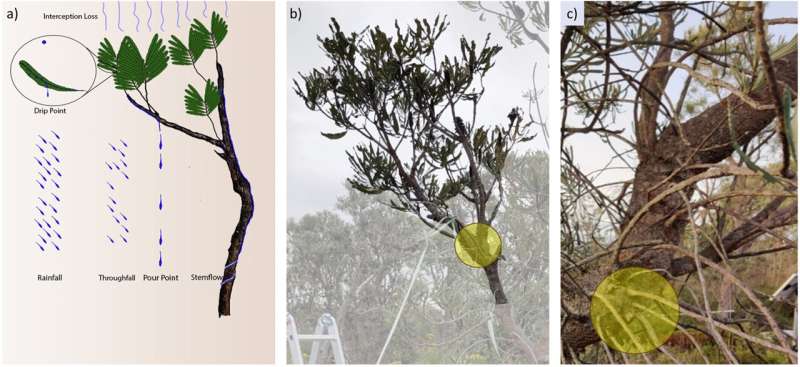Forests play a critical role in regulating water reaching the ground, but how exactly this happens hasn't been fully understood. A recent study published in Water Resources Research explores a novel concept called "pour points" that could revolutionize our understanding of woodland water management.
Pour points are distinct from the familiar drip points where water falls from leaves. Instead, they occur when rainwater travels along branches, merges into rivulets, and detaches before becoming stemflow (water flowing down the trunk). This detachment happens at specific locations, like branch junctions or sharp angles, concentrating water delivery to the forest floor at fixed points.
The study, led by Ashvanth Kunadi from the University of Western Australia, focused on banksia woodlands, which experience limited rainfall. The research revealed that pour points significantly increase the amount of water reaching the ground compared to regular rainfall or throughfall (water passing directly through the canopy). This is due to the larger water droplets at pour points having more kinetic energy, creating deeper indentations in the soil and promoting infiltration.
Kunadi emphasizes the significance of pour points for several reasons:
- Improved water flow understanding: Pour points offer valuable insights into how water travels on trees, ultimately leading to a better grasp of the forest's interception system.
- Biological hotspots: Concentrated water flow at pour points creates areas rich in life, as water is essential for all living things.
- Enhanced infiltration: Pour points promote deeper water penetration into the soil, crucial for groundwater recharge and storage.
- Accurate water resource assessment: Ignoring pour points can lead to underestimating the water reaching the ground, impacting water resource management.
The research team conducted field studies and rainfall simulations to understand pour points better. They measured water collected at suspected pour points and compared it to surrounding areas. The results showed pour points delivering 1.5 to 15 times more water than regular rainfall or throughfall, often exceeding stemflow as well.
The simulation experiments revealed that branches with denser foliage channeled more water to the pour point, and this flow was less affected by branch angle variations. However, removing leaves significantly altered water distribution between stemflow and pour points. The optimal branch angle for pour point initiation remains under investigation, but further research using idealized models is underway.
The study site in Western Australia sits above a crucial groundwater source supplying the city of Perth. The research suggests that pour points have the potential to recharge groundwater supplies not just in this location but globally through various tree species. This holds immense value for sustainable water resource management for both forests and human populations.
Kunadi concludes by highlighting the importance of continuously learning about the natural world. He emphasizes that pour points offer a chance to improve our understanding of the water cycle, particularly the often-overlooked interception process.




0 Comments